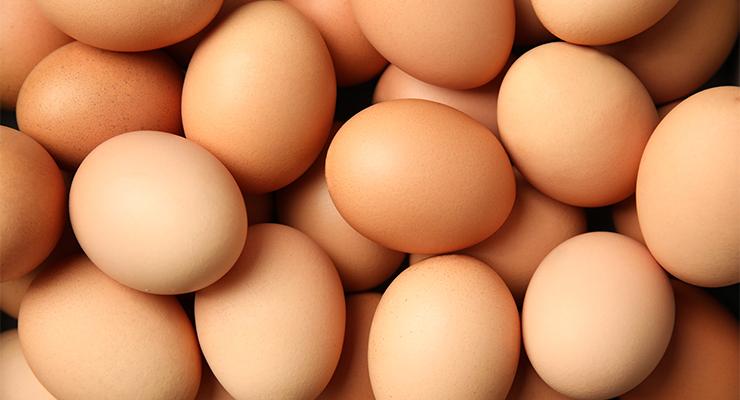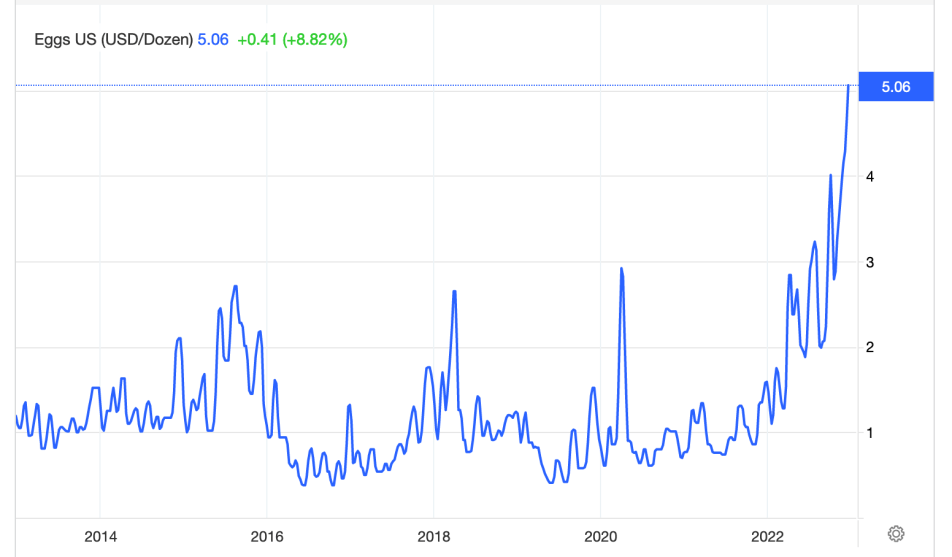
Egg-flation is upon us.
Smashed avocado used to be the expensive thing at cafes, the brunch item that launched a million editorials arguing millennials were spending too much and saving too little. That was about five years ago.
But avocado farmers got too excited and planted vast orchards. The period where a young avocado tree doesn’t produce fruit is now over and avocado gluts are more common. This year the little fruits were selling at a dollar each, or even less. Guacamole is no longer a luxury! (Although La Niña is making production forecasts look a little worse this year).
Egg-spensive times
Meanwhile, the humble egg has been cheap for a long time. The way eggs are made has permitted them to remain stable in price, even as “free range” became more and more popular. Australians eat an estimated 14.4 kilograms of eggs each every year. That’s about half a large egg every day (including as ingredients).
But recently their price has become a hot topic. The egg industry came out earlier this year all gloomy and sunny-side down. They told consumers input prices were rising and we should get ready to pay $10 for a dozen.
That was even before the bird flu. The current strain is known as “highly pathogenic avian influenza” and is infecting birds all over the world. In America it has killed more than 50 million this year, the biggest outbreak on record. It causes nasal discharge and sudden death in chooks. The virus is also ravaging flocks in the UK and across Asia. Birds that aren’t killed by the virus are being culled to prevent spread.
While the avian influenza virus is one that can slip from birds to people, it hasn’t much. For now bird flu is not a human problem — except if you’re a chicken farmer or egg eater.
Price egg-spansion
In the US, egg prices are up fivefold. A dozen eggs, wholesale, has suddenly gone from $1 to $5.

In Australia, our situation is not so bad, yet. Egg prices are up, but nothing like five-fold.
In 2021 a dozen large free-range eggs from Woolworths used to cost $4.10, and $4.50 was the price for extra large eggs. Now $4.50 gets you the large eggs and the extra-large costs $4.90. That’s an increase of a bit under 10% in the past year.
Pace Farm extra-large eggs used to be $5.95 a dozen in 2021, whereas now a dozen large eggs from Pace Farm cost $6.30 and the extra-large cost $6.80. That’s also an increase of a bit more than 10%.
An egg-splanation
Why has the global egg price situation not directly affected us yet? Because egg import and export are quite limited. Unlike, say, petrol, where the Australian consumer pays the global price, Australian domestic prices are partially insulated from the global market. We export a measly $7 million of eggs in the shell each year and import $8 million.
As you can imagine, exporting fragile fresh eggs is a bit of a logistical drama, and there are regulatory hoops to jump through too. Still, the egg farmers of Australia must be eyeing that export opportunity. American consumers would gobble up our eggs if we could get them there. And if they do, the global price becomes much more relevant.
Meanwhile, are we safe from bird flu? Could the virus break through our strict biosecurity regimen? The answer is yes, because birds don’t politely arrive through customs.
“Migratory birds returning to our shores annually between September and November may introduce HPAI viruses,” says the Department of Agriculture. It encourages chicken farmers to use nets to keep wild birds out of their chicken runs, but given the highly contagious nature of bird flu and the migratory period that ended in November, the chance of infections in Australian chicken flocks is high.
With all this happening, egg prices are highly unlikely to go back down any time soon. The humble egg could soon overtake avocado as the topic of choice for scolds telling young people why they can’t afford housing!








If we are seriously contemplating exporting eggs we had better reserve a proportion for local consumption first. Don’t do what the Government did with our gas supplies and sell the lot overseas while making us pay world prices for our own gas..
An eggscellent article. Eggstroardinary.
“Grow your own”? As in keeping a couple in our back yards? Under netting so no stray birds get near their enclosure. And can we keep roosters? We will just have to get used to their crowing.
How’s swine flu going worldwide? Spreading?